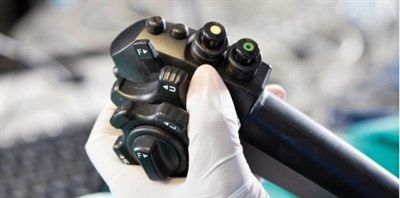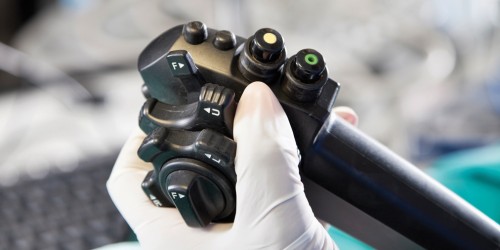
Roundtable: Flexible Endoscopy
Endoscopy means to look inside something and usually refers to peering into a body for medical reasons such as diagnosis or treatment.These medical devices can be used to investigate symptoms, confirm a diagnosis or provide treatment.
Mon Sep 01 2014
Endoscopy means to look inside something and usually refers to peering into a body for medical reasons such as diagnosis or treatment. Unlike the majority of medical imaging devices, endoscopes are inserted into an organ to view it. These medical devices can be used to investigate symptoms, confirm a diagnosis or provide treatment.
TechNation reached out to industry experts to find out the latest on flexible endoscopes. Philip Doyle, Director of Marketing, Gastroenterology, Olympus America Inc.; Charles Neff, Vice President of Operations with MedServ International Inc; and Jeff Maben, Flex Repair Division Manager at Mobile Instrument Service & Repair Inc. took time to share their insights.
Q: What are the latest advances or significant changes in flexible endoscopy and in the flexible endoscopy market?
Doyle: The introduction of a universal endoscopy platform has been considered a game-changer for endoscopy. The video processor and light source of the system can be used with both flexible and rigid endoscopes and camera heads, allowing a single platform to support multiple departments, from surgery to pulmonology to gastroenterology.
Maben: It’s an exciting time in the flexible endoscope industry with growing technological innovations promoting enhanced diagnosis and treatment methodologies. Advancing technology is enabling clinicians to gain greater access to the GI system which is facilitating increased disease detection capabilities. Expanding capabilities afford facilities the ability to improve infection control to decrease the number of healthcare-associated infection (HAI) occurrences which incidentally helps to contain rising healthcare costs. Additionally, there’s an immerging focus on flexible endoscope reprocessing technology with emphasis on continuing education on proper reprocessing procedures to also help improve infection control.
Neff: There is an ongoing advancement in imaging technologies that aims to improve visualization of the vascular network and surface texture of the mucosa and therefore are improving tissue characterization, differentiation, and diagnosis. These include technologies like chromoendoscopy, narrow band imaging, FICE and autofluorescence endoscopy and point enhancement or virtual histology technologies like endocytoscopy and confocal endomicroscopy. Additionally endoscope manufacturers are beginning to release high pixel count CMOS imaging sensors to replace higher cost CCD sensors.
Q: How will those changes impact the flexible endoscopy market in the future? How will they impact maintenance?
Doyle: Universal endoscopy technology will play a key part in helping to address facilities’ efficiency goals and strategic spending because it meets the needs of several departments within a larger healthcare facility. The single-platform concept enables streamlined and flexible equipment deployment; simplified logistics, training, and biomed support; and backwards compatibility, together resulting in improved turnover time and reduced service expenses.
Maben: Across the nation, facilities are faced with rising healthcare cost concerns that are compounded by reduced government funding and facilities are looking to service providers to assist in reducing costs. A partnership between businesses and customers can offer the benefit of continuing education on proper scope care and handling procedures, proper scope reprocessing methods, and the implementation of routine preventive maintenance inspections to reduce user damage and help save on repair costs. Keeping existing equipment in peak condition will extend the life of the equipment saving capital budget dollars as well as provide repair cost containment. Ask any administrator or any clinician the best method to reduce infection or reduce repair costs and they will tell you it is prevention. I think we’ll see more aggressive preventive maintenance programs throughout the healthcare industry.
Neff: The overall impact of improved visualization is to enhance the diagnosis outcome. At the outpatient facility level, technologies like narrow band imaging and FICE will be readily available. At the specialist or cancer center level, most or all of the virtual histology technologies will be available. Since most of these technologies are built into the manufacturers’ video processor systems, and not into the endoscope, the overall cost of repair should not be significantly impacted.

